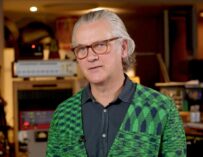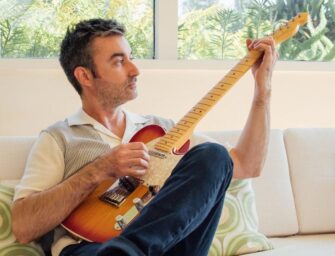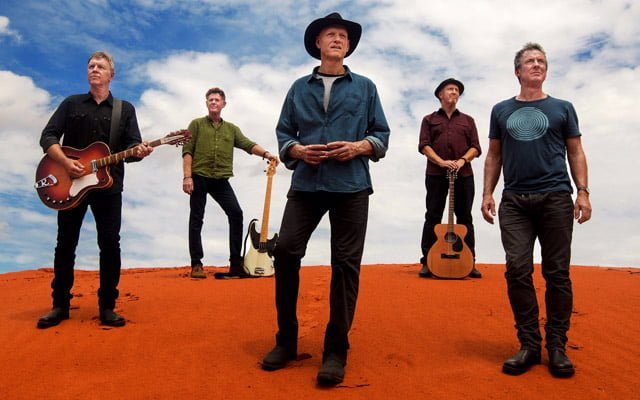
Astrid Williamson: “If you need to serve the song by evolving it, do it.” Photo: Mark Rowden
The Scottish singer-songwriter describes how she turned writings found on an old hard drive into new album ‘Into The Mountains’
The success of Arlo Park’s Collapsed In Sunbeams is just one recent example of how mining old journals can be fertile ground for songwriting. For her new album, Into The Mountain, Scottish singer-songwriter Astrid Williamson used a series of her own writings that she had discovered buried on a hard drive and used them as the foundations for the 10 songs that followed. Released today, it’s instantly apparent that, from this bedrock, an impeccable collection of songs has been built.
Here, Williamson talks us through her process, providing tips on how personal journals can be turned into songs…
Into The Mountain is loosely based on some journaling/poetry/letters I found in a folder of the same name buried in my computer’s hard drive. In 2016, I was living in Lincolnshire where I’d set up a small studio to write a classical piece Requiem & Gallipoli, released in 2015 on One Little Independent Records. I’d just given notice and realised soon I’d be losing this amazing creative space when I found the folder and decided – since I had about a month left – I’d try to create something different with these “pieces” of writing.
There were 10. Some letter form and some more poetical in shape, some incredible prosaic, but none felt like the usual starting point for a project or album. In the end, seven pieces survived this process. I gave myself the task of writing a song per night. Yikes!
This is completely opposite to how I would normally approach songwriting. Usually, I derive songs from personal experience and almost without exception, the music comes before the lyrics. I also tend to craft and craft, until I’m happy. I’m still finishing songs I started 20 years ago.
It was scary to throw myself into this different approach knowing it could be a total disaster but having written eight albums so far in my career I felt I could take this risk, in fact, it felt necessary. I’d sit down with each piece and read the text then began to improvise at the piano.
1. DON’T OVERTHINK, GO WITH YOUR GUT
As I played around with the words, trying to engage emotionally with their meaning, melodies started to emerge and recur. I would be improvising chords, again waiting for sequences that felt good then, after about 10 minutes, maybe more, rather than try to analyse the music, I’d commit to doing a take. No writing down and figuring out what should or shouldn’t happen next, just going with my gut.
2. IF YOU ARE PLANNING TO KEEP ANYTHING FROM EARLY DEMOS, DECIDE ON A TEMPO
I knew from previous recording experience that if there was any chance a performance – even at the demo stage – would survive to the end of the creative process you need to stick to a tempo, if you are going to use a click track that is.

Astrid Williamson: “ I’d sit down with each piece and read the text then began to improvise at the piano.” Photo: Helen Davies
3. SET UP YOUR MICS CAREFULLY
As with the above tip, if you are planning to keep anything from early demos, set up your mics carefully, checking the levels aren’t too high or low.
4. DON’T TRY TO PUT A SQUARE PEG IN A ROUND HOLE
Usually, I’d want to write verse, verse, chorus, verse, chorus, middle eight, chorus, fade, or something similarly structured. I would feel that it’s necessary to impose these traditional structures. There are, after all, very good reasons hits are hits. During the creation of Into The Mountain, the challenge was to let the music evolve as it wanted, to honour how it had arrived, not try to put a square peg in a round hole by chopping up or rearranging the harmony, lyrics etc.
On June Bug, Prague, There Are Words and Body, the piano takes on the final album recording are exactly as they went down in those first 10 minutes of inspiration. After this I would create the rest of the music, to support what was already there, trying not to change their essence, to trust the original impulse of the inspiration. I had to re-record the vocals so there wasn’t any piano bleed, but even some of the original vocals made it onto the final tracks. Prague has vocals (now BVs) from these original takes as well as the piano.
5. SOMETIMES BREAK YOUR OWN RULES
But, if you need to serve the song by evolving it, do it. Although I swore I was going to follow the process to the end – i.e. keep the music exactly as it went down in those first moments – I did write second verses for In Gratitude and Coming Up For Air, as I felt the songs would be better served if I did this. Perhaps it’s no accident that these two songs are the singles?

































Related Articles